
Recent Spring Salmon Fishing Trip on the Miramichi
Fishing Friends:
It’s the best spring salmon season in some years according to Eddie Colford, the manager and head guide of the Black Brook Salmon Club. I saw Eddie and his son Alex out on the river this last weekend, with their sports, BBSC member Frank Harrington, and his guest Ken Blomquist who had recently caught a 43.5-inch salmon.
I also spoke with Rick Cunjak PhD who had been helping his UNB/CRI University of New Brunswick/Canadian Rivers Institute colleagues catch 50 kelts for tagging – they did it easily. In addition to providing more information on the Greenland migration, the kelt tagging helps us understand the dynamics of the kelts that return to the river the same summer to spawn again – consecutive repeat spawners – and those that head back out to sea and come back a year or two later – alternate repeat spawners. From what I have read in the past, consecutive spawning is the preferred pattern of the salmon, but it depends to some degree on how much feed they can find nearby after exiting the river. Many fish leave the river in May and return as early as July in order to spawn that same fall.
Rick noted that the fish they caught looked to be in good condition, and that it was his impression that they fought exceptionally well. It appears that it was a good year for kelt survival in the Miramichi. This is because of the late ice formation and good but not excessive flows of water all winter long. One comment was that much of the river simply melted in place. The ice run was really very gentle and only lasted a little more than a day.
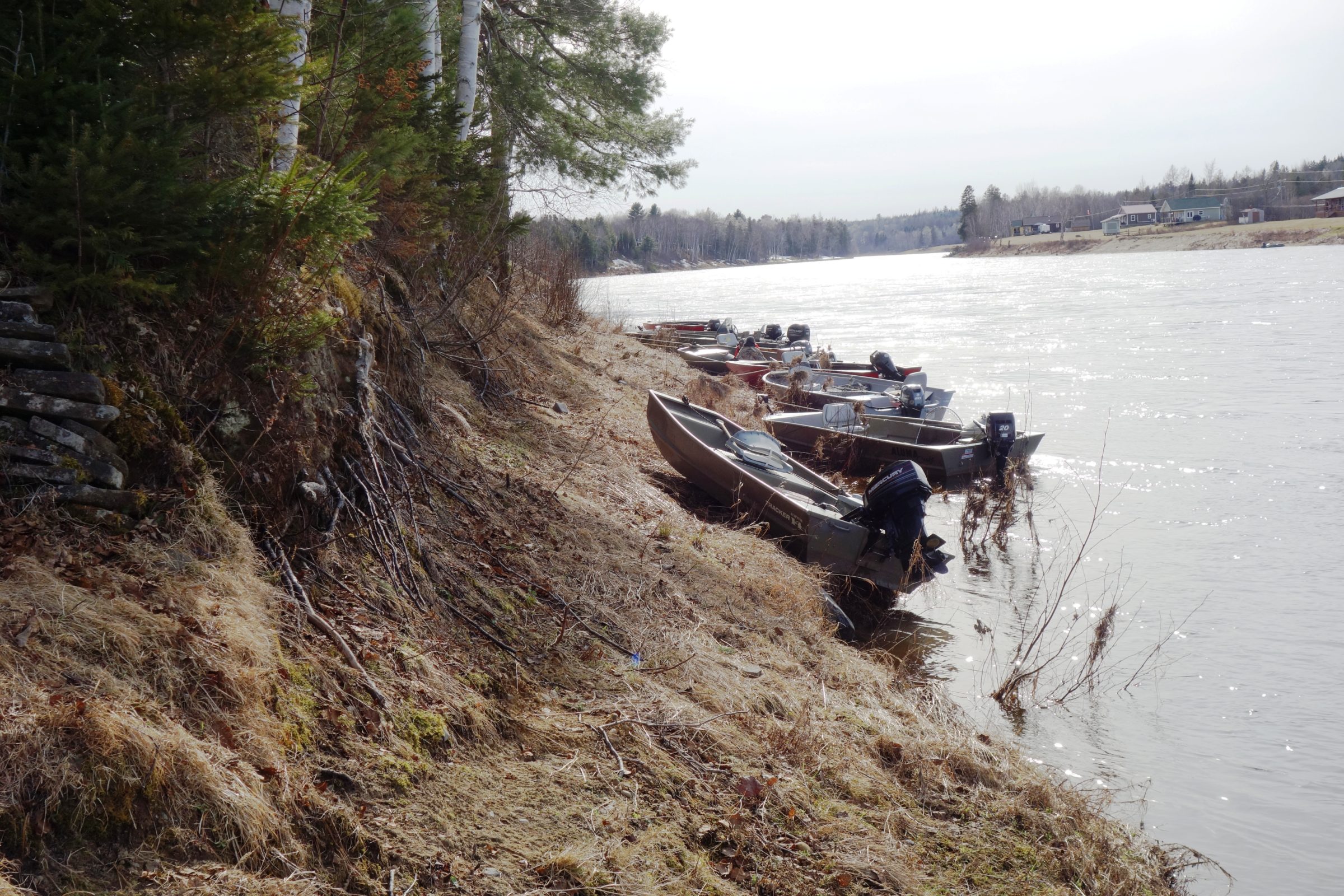
The boats at Country Haven were in for lunch. There were another half dozen boats on the shore in back of me.
The fishery this spring seems to be about two-thirds salmon as opposed to grilse. Salmon do survive the winter better than grilse, probably because the grilse are mostly males and use up a lot of their reserves in the rigors of spawning. Grilse are also smaller fish and just plain have less reserves to use up. Add to that the fact that grilse runs are down more than salmon runs are to begin with. This is very likely because the outgoing smolt runs are being hit so hard by the over-populous striped bass population. Repeat spawners help make the salmon population more stable because they include fish making repeat trips back into the river.
I got a message from Chris Scott who caught a tagged salmon kelt. He asked me for the number to call it in to DFO. I still had Joe Sheasgren’s DFO number 506-778-2837, and gave it to him. He said he talked to a friendly lady who told him the fish had been tagged in Millerton on 10/17/22. I recall that there was a late spurt of fish last fall, and this was one of them.
Darrell Warren and I fished moderately hard – we had to stay within the 5 fish per day limit – and could easily have exceed that in the first couple hours of the morning on both days. My spring fishing technique has evolved over the years. I used to make my cast, do some mending to get the fly down, and swing the fly as in bright salmon fishing. It will catch fish, but what I do now is to get that fly into a fishy spot with enough line out to get near the bottom, and then move that fly ever so slowly, and sometimes not at all. The retrieve cannot be too slow.

The yellow on the Willie Gunn tube really shows up nicely in the murky spring water. I never changed flies the whole trip.
I really like tube flies or Waddington’s. I prefer them because I can use a relatively small hook at the back of a long fly. The small, deep-pocketed, thin-wire hook holds better than a long shanked hook, is much easier to extract, and it does very little damage to the fish.
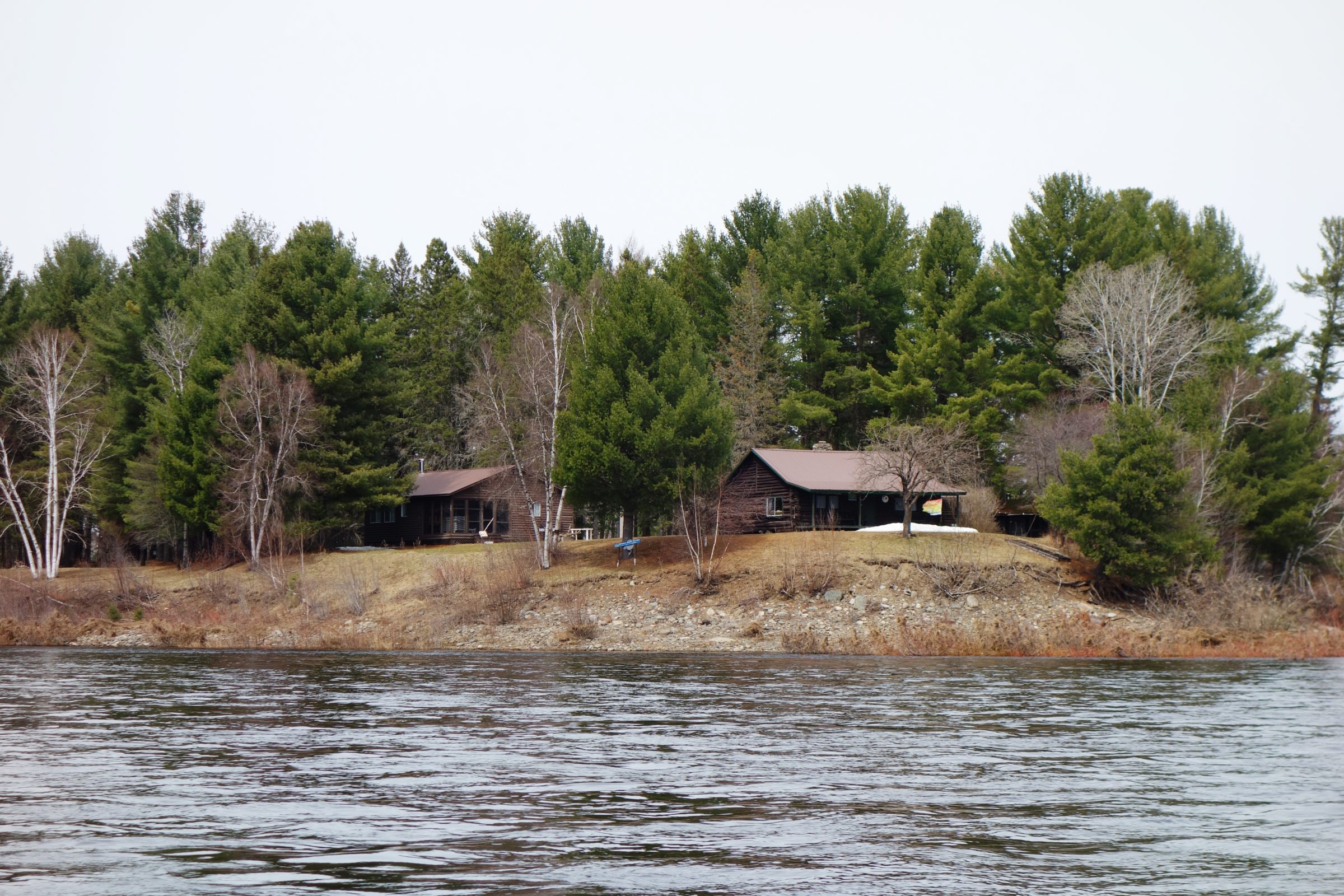
The old lodge on the upriver point of Doctor’s Island was built around 1940 by Clarence Mountain, John Brophy and Paul O’Haire.
Come April, it is really nice to get back out on the water and see some of the old Miramichi haunts. There are photos in this blog of the club house and main bunkroom on Doctor’s Island, Campbell’s Pool with its lovely old field stretching down to the river, and Black Brook Salmon Club with a pile of snow still in front of one of the guest cabins. The old barn over at my neighbor’s still has a horse-drawn hayrik lofted up to hay loft. I look at these fields which were all gardens and pastures for sheep, cows and horses, and 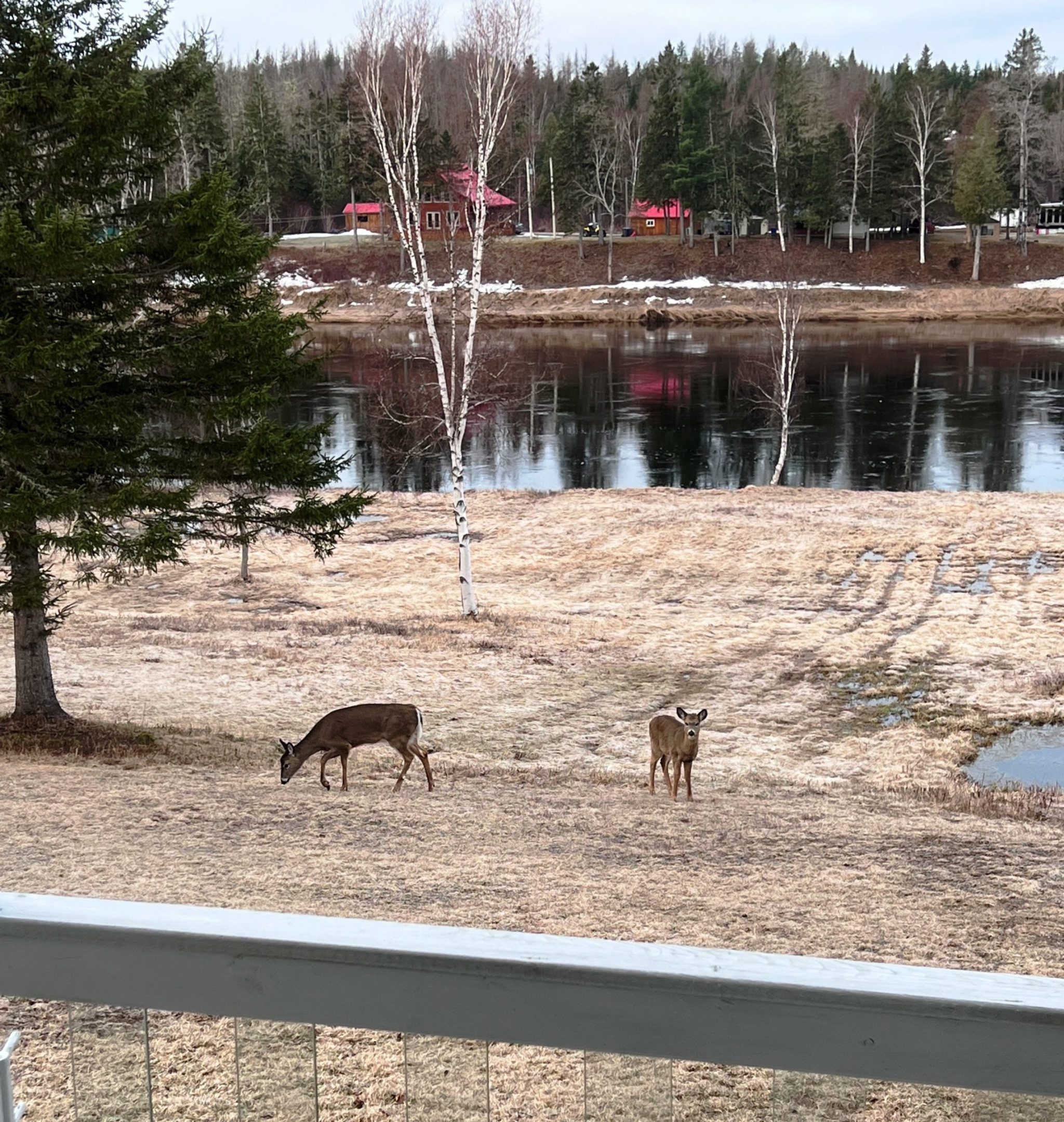 imagine what it was like to see them out there plowing up the ground – with a river full of salmon waiting for the end of the day’s work.
imagine what it was like to see them out there plowing up the ground – with a river full of salmon waiting for the end of the day’s work.
The land along the Miramichi has a special kind of freshly washed beauty in the spring. Every brook is pouring volumes of clear, cold water into the river, and the fields are all flattened down from the winter snows and provide great visibility. I saw lots of deer, a variety of migrating birds including the first swallows, and when I was leaving in the early light Monday a grouse was sitting in the road at the end of my driveway.
Our fishing plan was to hop around and try different places, leaving each spot shortly whether we found a fish or not. Most of the places, including brook mouths, deep slow shorelines, and backwaters like the big slow stretch above Doctor’s Island held fish. It was a short, but pleasant trip, and it all left me longing for the summer season which is now only about a month away.
What does all this mean for 2023 bright salmon prospects? With the excessive smolt predation by striped bass it is unlikely that our grilse run will be anything like the numbers that we saw 20 years ago. But we did have quite a good grilse year in 2021, so we can still hope for a return like that. 2 MSW virgin spawners, always the biggest component of the salmon run, are often reflective of the previous year’s grilse count which was not great. I’ve looked back through some old records, though, and it isn’t always the case. We’ll just have to see. Certainly the spring salmon fishery indicates that the survival of repeat spawners is good, and those are large, important fish. It would help if the Miramichi smelt run was something closer to what we have seen historically. The availability of that huge population of smelts is known to be an important factor in the Miramichi’s large number of repeat spawning fish. With good numbers of such a large and nutritious prey species available right in the lower reaches of the river the kelts can quickly recondition. Unfortunately the smelt population is also down.
I interviewed a commercial smelt netter from Miramichi Bay. He was very careful not to draw any conclusions he couldn’t substantiate, but he said that the striped bass population seems to get a little larger every year, and that the smelt population declines accordingly. He also said the same thing about winter flounder. I never thought much about winter flounder in Miramichi Bay, but at one time it had a very large population. Young winter flounder could be a great prey species for both striped bass and salmon kelts, and probably they were historically.
So that’s another species that is likely being devastated by striped bass. Let’s see, that’s Atlantic salmon, sea run brook trout, gasperaux (anadromous herring), rainbow smelts and winter flounder. Five important species down for the sake of bloating the numbers of one. It doesn’t make much sense to me.
Thanks for reading.
Brad Burns


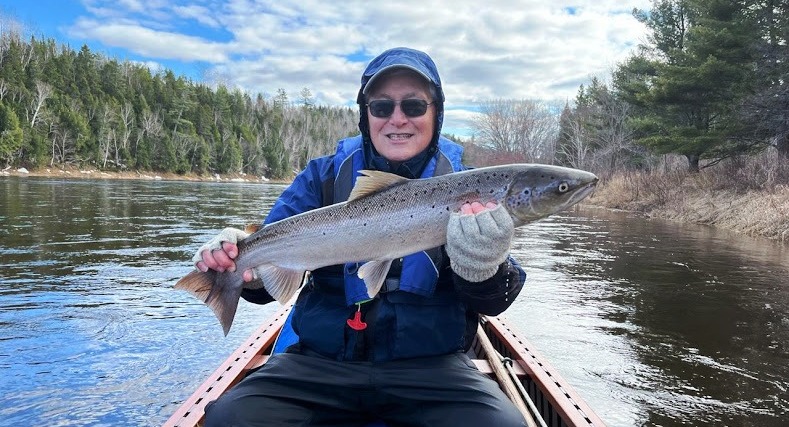
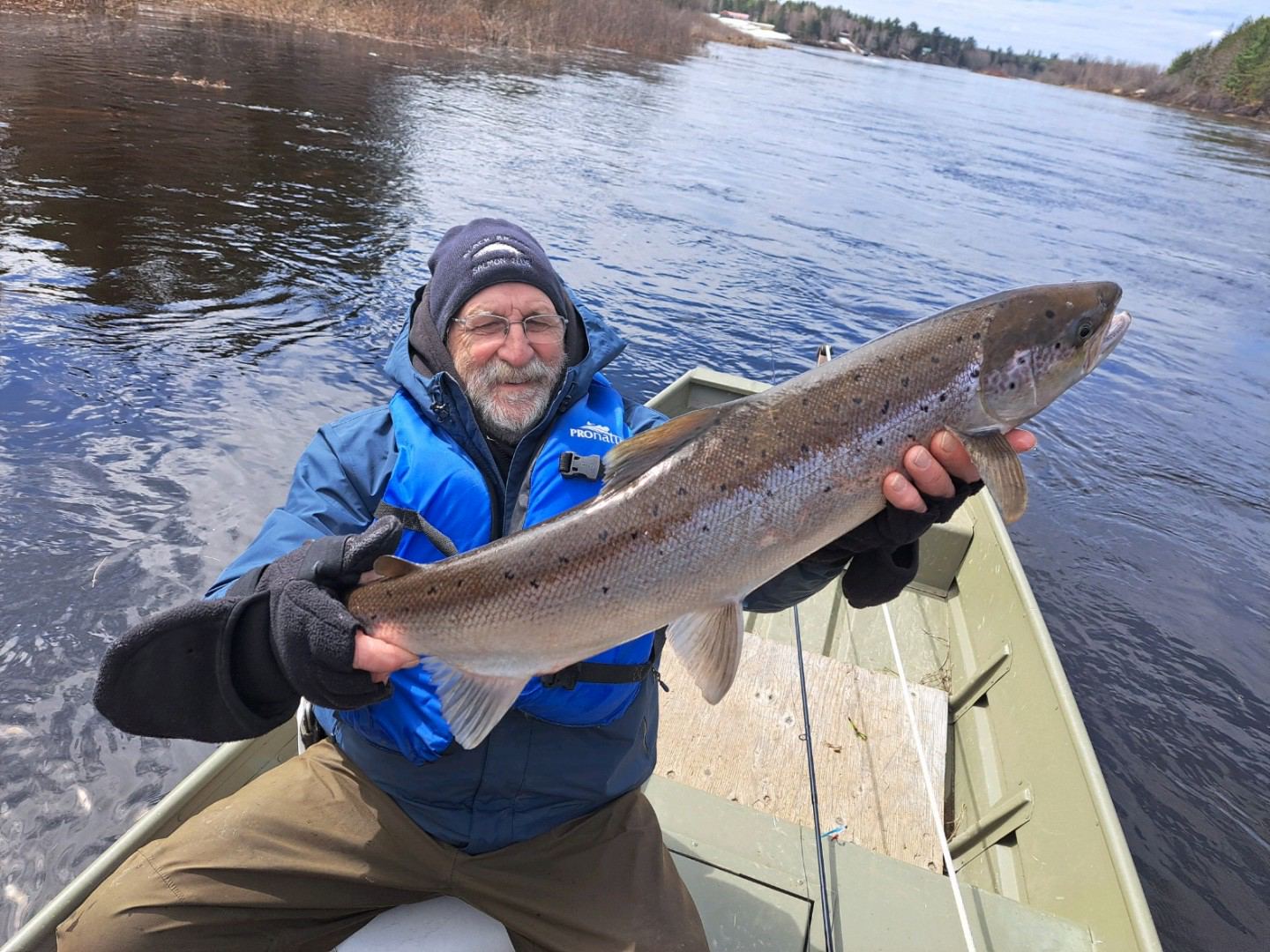
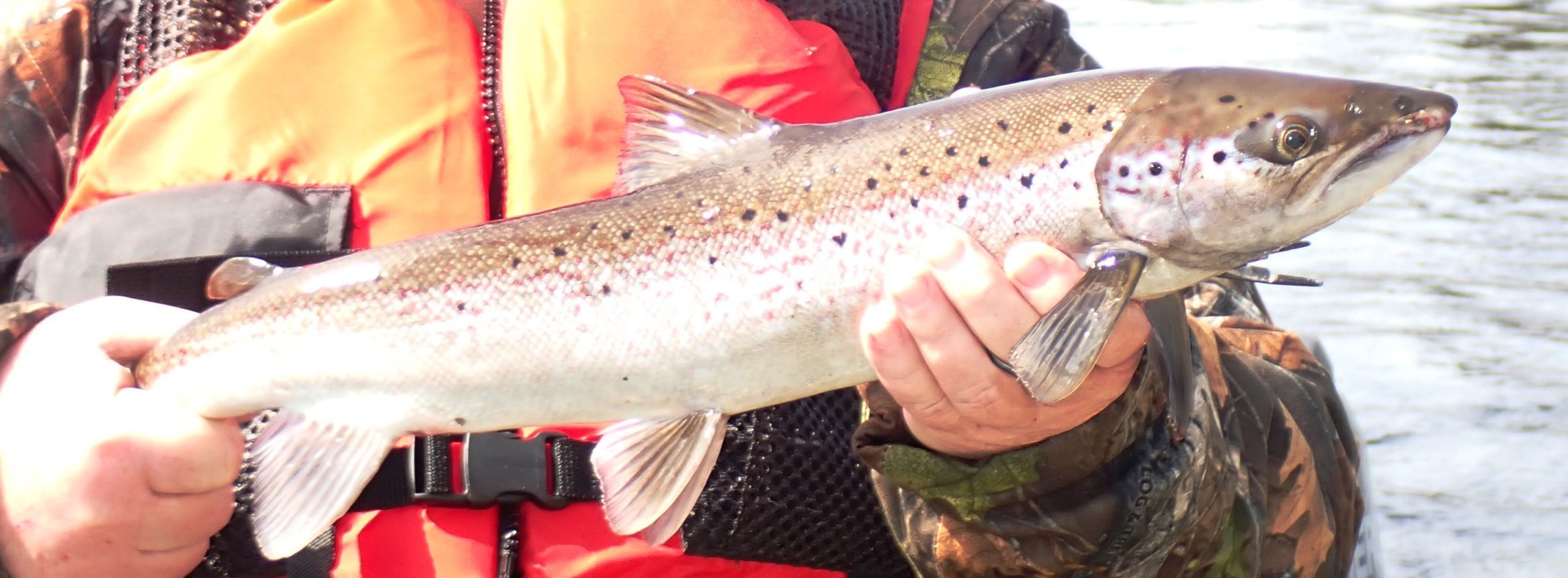
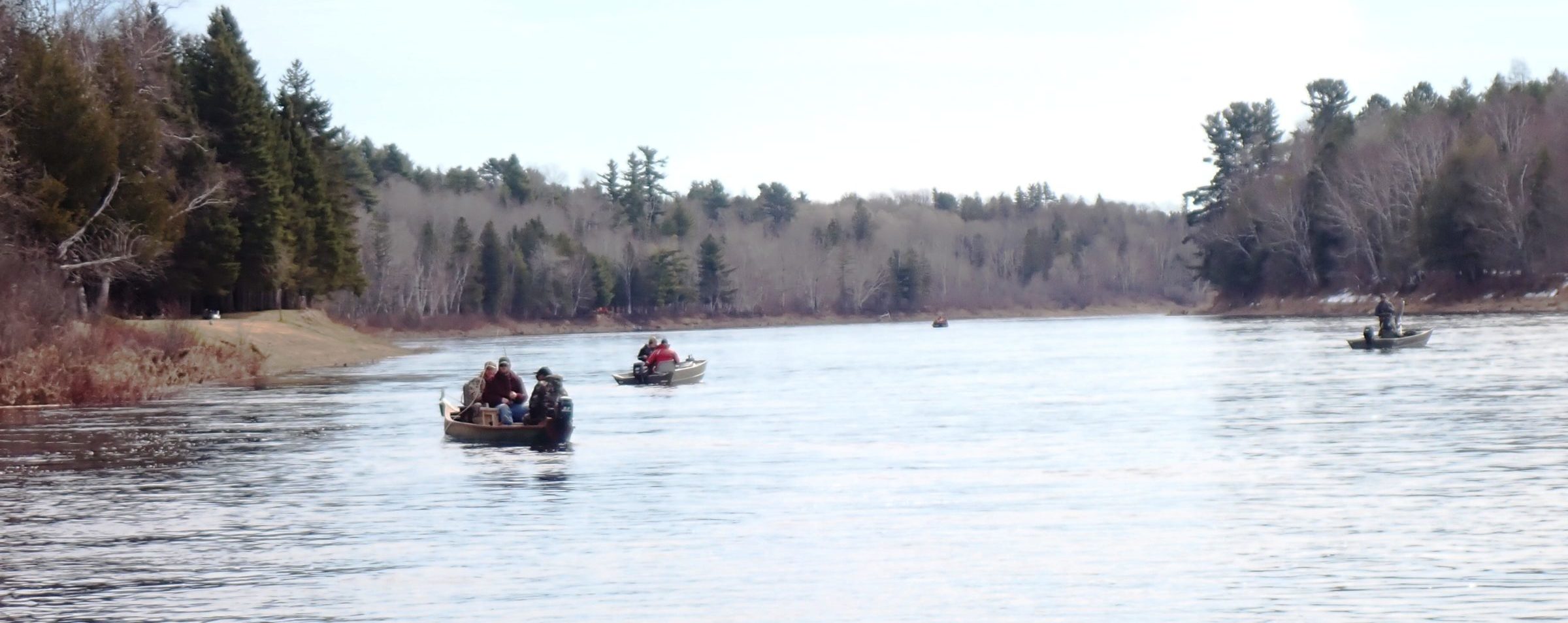
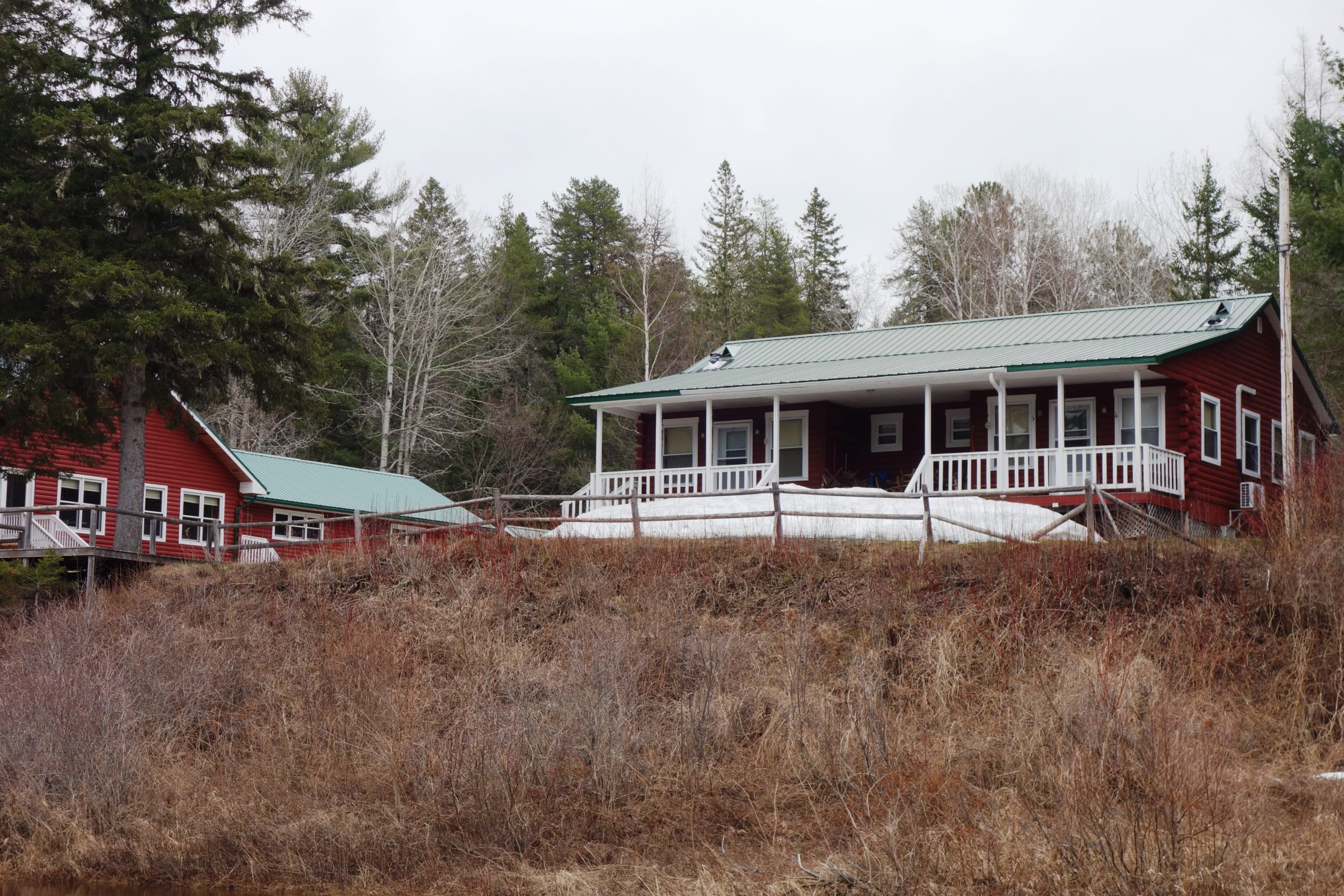
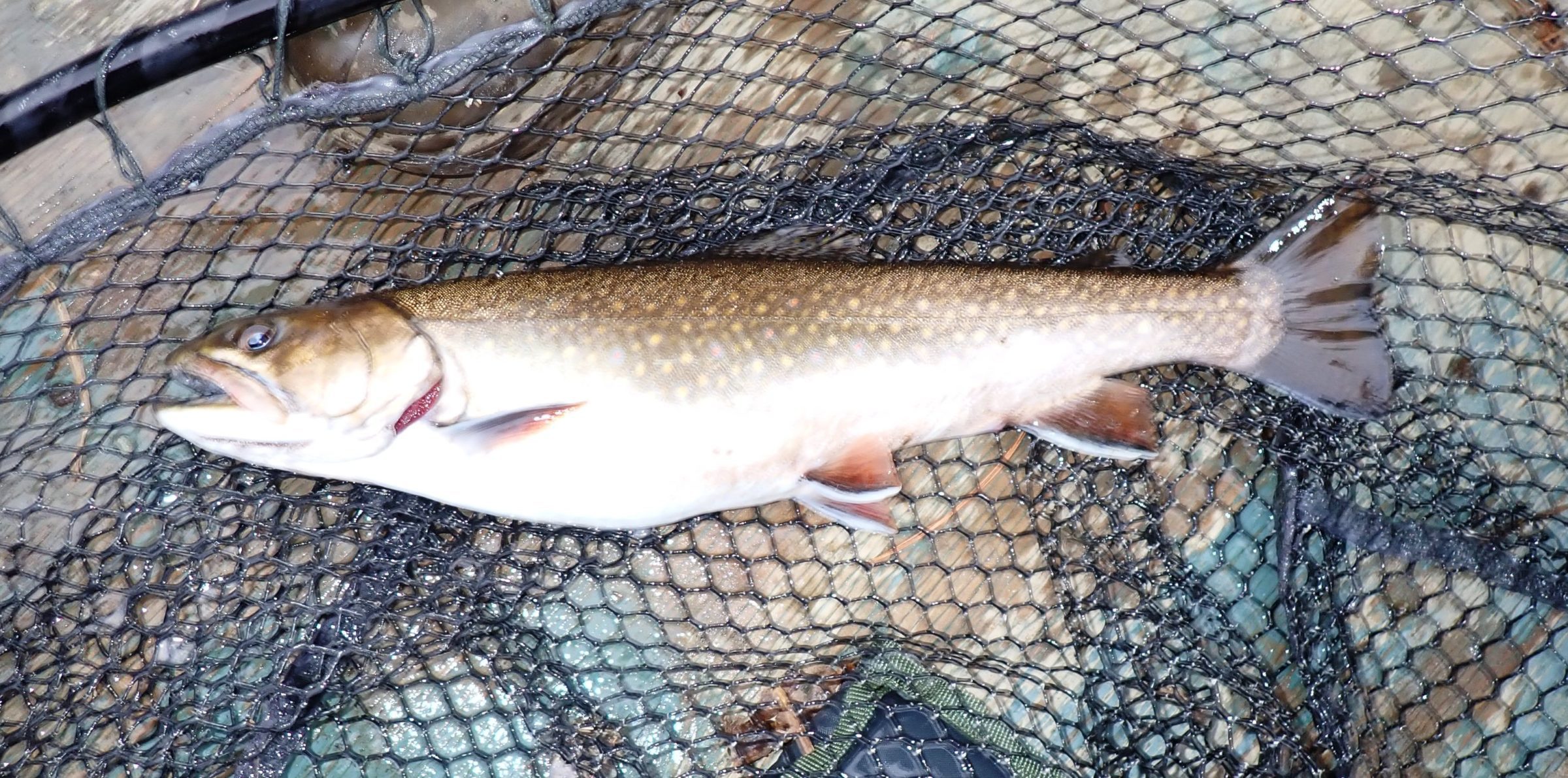
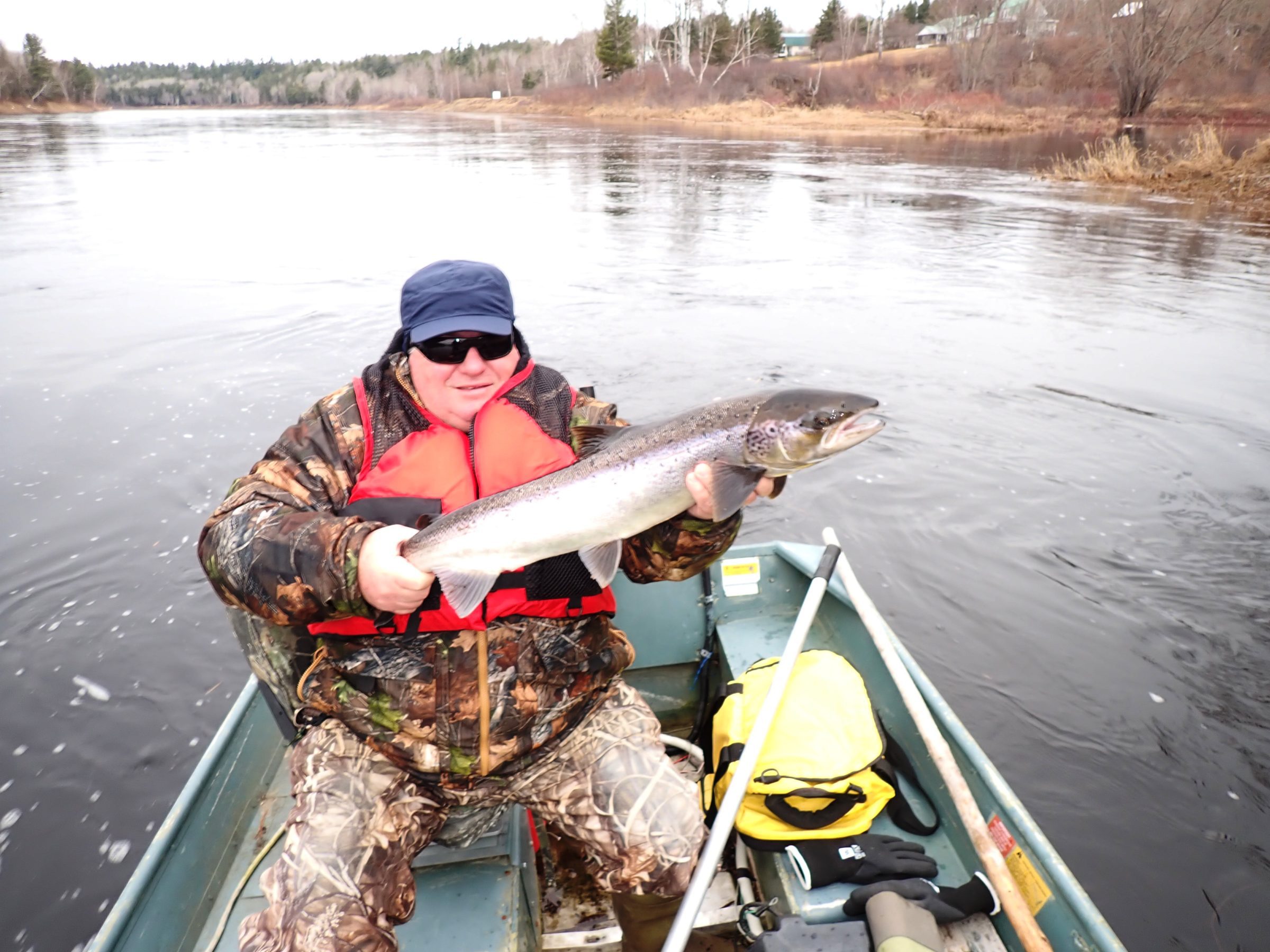
Hi Brad. Terrific column as usual. A quick question. In regards to the kelts that leave the river and return the very same year (as soon as 2 months later) I’m wondering where do they go? I’m sure they don’t make a trip to Greenland and back in that short timespan.
Please Keep hammering away with the facts. We can only hope that one day before its too late logic and reason will win the day
Bob
Thanks Bob. I’m not sure that anyone knows the exact range of the annual spawners, but it is not believed to be too far. I have heard just within the southern part of the Gulf of Saint Lawrence. That’s where the food part comes in. It is believed that if they can’t find a sufficient amount of nutritious food then they just keep swimming and head for Greenland.
Great column and lovely photos.
Thanks Robyn. The Miramichi is still a great destination, and it is really just about the only one there is with a good infrastructure for spring fishing.
What a great story and pics, I haven’t done the spring trip for a few years, but you inspire me to make sure I go next spring!
Thanks for sharing!
Rick – I know your old guide George Curtis passed away – unfortunately. There are lots of options as I’m sure you know. We fished from the shore with our Spey rods right in front of Black Rapid’s Lodge last spring, and it was productive and great fun.
Howdy Brad,
Referenceing your April 25th blog , my brothers and I really enjoyed the view and info on Doctor’s Island.
Also I applaud you,the energy and time you spend defending and assisting our great Miramichi Atlantic Salmon and the river.
Happy Day
Dave O’H.
Thanks Dave. The old lodge is really a landmark on the river. David Donahue has done a lot to improve its condition.